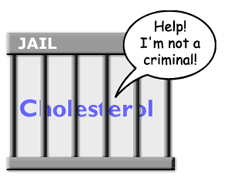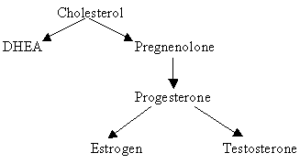
“My Best Friend, My Worst Enemy” is an important part of our healthy-aging program. It is normal for all of us to try to protect ourselves from so-called “enemies”- we have locks on our doors, alarms on our cars and homes, use medications to fight cholesterol. However, life is not so simple. Many times, what is considered beneficial may be harmful, and at the same time, so called “bad” things, have health benefits. A good healthy-aging program should be able to assess and protect from possible damage caused by “best friends”, and at the same time learn how to appropriately use and improve benefits from so-called “enemies.”
Food and Oxygen
We can think of food and oxygen as our “best friends.” Human beings cannot survive without them, but they are also our worst enemies. Every time we eat a meal or take a breath, we are also doing damage to ourselves. In the process of eating and breathing, our body produces free radicals and other harmful waste products that can shorten our overall lifespan. Oxygen, for example, is the main source of free radical damage. Free radicals are formed by cells in the process of utilizing oxygen for energy formation, and are one of the main causes of aging and the development of the degenerative diseases of aging. This situation is analogous to making a fire- the heat produced by the fire may be beneficial in many ways, but the smoke has the potential to injure or even kill us.
We cannot survive without food and oxygen. Therefore, what should we do? How can we balance our immediate need for survival with our desire to live long and healthy lives? Our program will teach you the answer to this and many other questions.
Cholesterol
Cholesterol is often thought of as our “worst enemy.” However, we forget that our brain is composed of fat, and that cholesterol serves many important biological functions. Our sex hormones, for example, are derived from cholesterol: How is it possible that such an important substance is thought of as an “enemy?” It is known that low cholesterol levels are associated with an increased incidence of cancer, while high levels are associated with an increased incidence of heart disease.
How is it possible that such an important substance is thought of as an “enemy?” It is known that low cholesterol levels are associated with an increased incidence of cancer, while high levels are associated with an increased incidence of heart disease.
What do we do about these seemingly conflicting points?
Our program will teach you why cholesterol may become an “enemy” if our cells are unable to utilize it properly and it becomes oxidized. You will learn how to control cholesterol in a “natural way.”
We will also teach you how to decrease the side effects of statins (cholesterol-lowering medications). These medications are considered “friends” because they decrease the serum cholesterol (an “enemy”). However, they themselves can serve as “enemies” to us through their many adverse reactions, including – in rare cases – death.
Hormones
Hormones are essential for our health. Most of us have the highest level of hormones in our twenties. This is a time when we are full of energy, sleep well, have a good memory, strong bones, have a high interest in sex, a good sex life, and very rarely have heart attacks, strokes, breast or prostate cancer. As years go by, our hormone levels gradually decline and so does our power, energy, muscle strength, memory, hearing, vision, sleep, and sex life. Sooner or later, many of us develop heart disease and breast or prostate cancer.
Hormones such as estrogen have been shown to be protective for the endothelium (the blood vessel lining) and hormones such as DHEA, Testosterone, and growth hormone have been found to be beneficial for the heart.
Most women do not suffer from heart attacks or breast cancer in their 20’s- a time when estrogen levels are high- but have these conditions as they age, when the estrogen levels are much lower. Menopausal women have also been show to have a higher incidence of heart disease and breast cancer when using hormone replacement therapy.
This seems strange, how can it be that:
- High estrogen levels in our 20’s are associated with almost no heart attacks, or breast cancer.
- Low estrogen levels in our fifty’s are associated with more heart attacks and breast cancer.
- Hormonal replacement therapy in menopausal women is associated with more heart disease and breast cancer.
It seems like a paradox, but the answer is very simple. We are all unique, requiring amounts of hormones that are suited for us, rather than using a standard dose for all. The right balance of hormones, however, serves to protect our health. Imbalance, inappropriate use and the use of poor compounding preparations may cause more harm than good.
We believe hormones to be very important for health and well-being. Hormone use is a very important part of our program, and this requires appropriate and regular clinical assessment as well as appropriate lab testing in order to assess effectiveness of treatment and to achieve the best hormonal balance and assess potential side-effects.
Essential Minerals and Vitamins
Essential minerals and vitamins are those minerals and vitamins derived from food that the body is unable to manufacture on its own. These include iron, copper, manganese and vitamin C. Essential minerals and vitamins are absolutely necessary for human life and can be viewed as our “best friend”; however, excessive amounts may be damaging and are linked with certain diseases, such as Parkinson’s, memory impairment, and heart disease.
Our program will teach you about “friends” and “enemies,” how they may be tested and how to make the most of their benefits, while limiting their damaging effects.
References:
1) Floyd, R.A. Basic Free Radical Biochemistry. Chapter 3 in Yu, B.P. Free Radicals in Aging. Boca Raton, Fla.: CRC Press, 1993.
2) McMillan, DE. A brief history of the neurobehavioral toxicity of manganese: some unanswered questions. Neurotoxicology 1999 Apr-Jun;20(2-3):499-507.
3) Zheng, W. Neurotoxicology of the brain barrier system: new implications. J Toxicol Clin Toxicol 2001; 39(7):711-9.
4) Youdim, M.B.H., Ben-Shachar, D, Riederer, P. (1994). Iron and Parkinson’s Disease. Advances in Research on Neurodegeneration. Y. Mizuno, Calne, D.B., Horowski, R, Birkhauser. II: 63-78.)
Our program will teach you about “friends” and “enemies,” how they may be tested and how to make the most of their benefits, while limiting their damaging effects.
- Why Healthy Aging Medicine?
- What is Healthy Aging Medicine?*
- Beating Heart Disease – Public Enemy Number One
- HGH, the Master Hormone of Youth*
- The Pacemakers of Youth*
- Joining a Longevity Program: What to look for
- Fighting the Aging Process: Quick Fixes and Misconceptions
- Cell First® Theory of Aging
- Other Theories of Aging
- Signs and Symptoms of Aging
- Life Expectancy
- Demographics of Aging
Pain due to heart disease (angina) often starts after the blood vessels to the heart (coronary arteries) are 70% occluded. This means that you can be symptom-free despite having heart disease, and when the symptoms finally arise, the disease is already well advanced.
Pain due to heart disease is not always in the chest. At times the pain may be felt in other areas such as the hands, abdomen, neck and jaw.
A heart attack may be painless, and this is more common in higher age groups, women, and diabetics.
The main reason for heart attacks and stroke are unstable plaques and thrombi (clots) in the blood vessels- these are not normally seen by angiography or identified by stress tests. This means that you can have a normal heart checkup, and soon afterwards develop a fatal heart attack.
